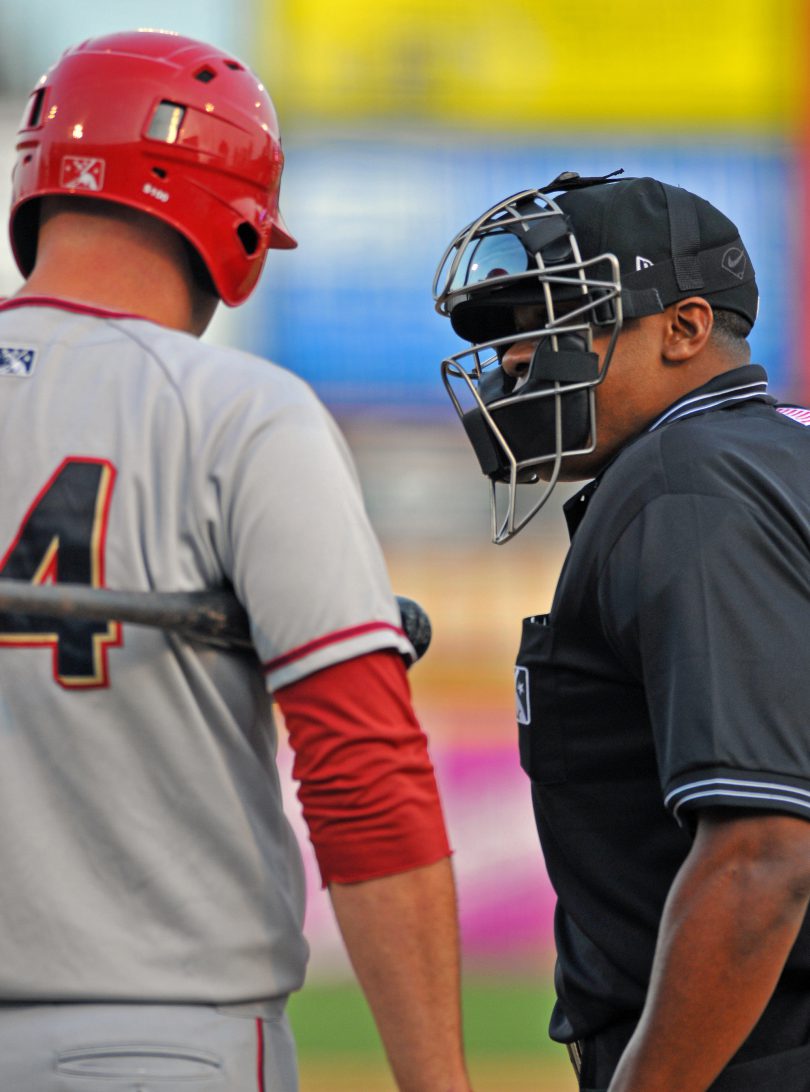The Situation:
It’s a 3-2 game in favor of the visitors in the bottom of the 8th. The bases are loaded, there are 2 outs, and a 3-1 count to the 5-hitter of the home team.
The Play:
The pitcher delivers the 3-1 pitch over the plate, but well above the top of the strike zone. The hitter recognizes the fastball, takes a big hack, and fouls the ball off. He steps out and mentally resets for the full count. The runners are off on the pitch, which is a ball off the outside edge of the plate. The hitter takes the pitch and turns to flip his bat towards the dugout. As he lets go of the bat, the umpire calls strike three and the inning is over. The hitter turns in protest, arguing that the ball was well off the plate. He continues jabbering at the umpire as he takes his position at 1st base.
The Outcome:
The umpire gets tired of hearing it from the player and ejects him from the game for arguing before the first pitch is thrown in the top of the 9th.
What Went Wrong?
The batter made two big mistakes. Arguing calls should be left to coaches, but you’ve probably heard that a million times. Arguing with the umpire was a mistake, but it wasn’t the first or biggest mistake the batter made. His biggest mistake was what we call transfer of blame. Transfer of blame is when a player deflects responsibility for his failure to accomplish something and blames the outcome on something external or beyond his own control. Transfer of blame comes in many different forms, but let’s look at how it worked in this example.
During the at bat, the hitter had a 3-1 count. He assumed that the pitcher was going to throw a fastball since he needed to throw a strike. Instead of looking for a particular pitch (a fastball) in one particular spot, the hitter assumed that pitch would be a strike, made his mind up to swing, and swung at the pitch out of the hand. The 3-1 pitch would have been ball 4, but the hitter chased it and forced the 3-2 count. Swinging at the 3-1 pitch was the batters’ decision and totally under his control. The at bat would have been a success and the game tied if he had done what he should have and taken the walk. Instead, the hitter transferred the blame of his failure on the umpire, thinking “I just got hosed. What was I supposed to do?” That may be true on the bad call, but not on the ultimate result. Truth be told, there is almost always something you can do differently to create a different result. The best players take ownership over their errors and accept responsibility for their actions, looking for ways to improve for the future. Next time you find yourself making an excuse or transferring the blame, check yourself and think about what YOU could do differently to improve for the next time you find yourself in a similar situation. Accepting responsibility and taking ownership of decisions (good and bad) are big steps toward improving as a player.






